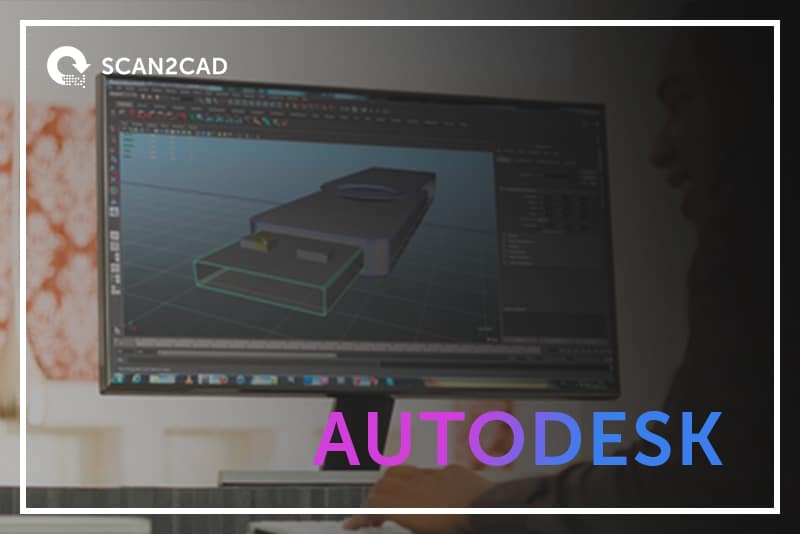Autodesk is a pioneer in 3D design, engineering and digital entertainment software. Though best known for its flagship product, AutoCAD, it has developed a vast range of software for the design, engineering and entertainment industries—not to mention hobbyists. But how much do you actually know about Autodesk?
Scan2CAD will get you updated with everything you could possibly need to know about Autodesk, from its popular products and acquisitions, to its impact on the CAD industry—and far beyond.
Table of Contents
History
Creation of Autodesk, Changes in Leadership and the Future
Autodesk was founded in 1982 by John Walker, and 15 other like-minded individuals. The company launched their first original product AutoCAD that same year—a CAD program acquired from programmer Michael Riddle. AutoCAD was first launched at the COMDEX trade show in Las Vegas, as the first CAD program in the world to run on PC. By March 1986, AutoCAD became the most widely used design application worldwide—pushing Autodesk firmly into the spotlight. Since introducing AutoCAD in 1982, Autodesk has expanded its portfolio of CAD software—becoming a leading presence in the CAD industry.
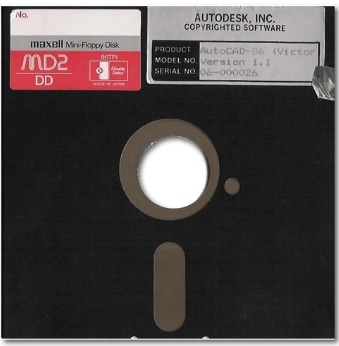
Back in 1982, AutoCAD was sold on floppy disks! (Source: Autodesk.blogs.com)
As with any other large company, Autodesk has seen many changes in leadership over the years. John Walker stood as Chairman and President of Autodesk until 1986, when Alvar Green became CEO. Walker continued to work behind the scenes, yet Green proved to be a controversial choice. He had no background in programming or computers—leading to a belief by many that he didn’t know what he was doing with Autodesk. In 1992, Carol Bartz assumed control for a 14-year leadership stint. Bartz followed the “3F” approach, or “fail fast-forward”—the concept of risking failure, being resilient, and moving forward if failure occurs. This concept proved successful, with Autodesk’s annual revenue increasing from $300 million to $1.5 billion. Carl Bass later took over from Bartz in 2006, taking Autodesk in a completely new direction—making Autodesk technology available in different ways to a broader consumer and maker audience.
The success of AutoCAD brought about the eventual introduction of discipline-specific versions such as AutoCAD Architecture. Autodesk has since expanded upon a number of non-AutoCAD based products as well, including parametric building application Revit and 3D CAD modeling software Inventor. In the past five years, Autodesk has made the move towards mobile and cloud-based applications including Fusion 360 and AutoCAD 360. And under the leadership of Bass, Autodesk has expanded its presence in the maker community, with acquisitions like Instructables and Pixlr.
Of course, that’s just the tip of the iceberg. Autodesk is more than just its products or its acquisitions. It’s had an impact on everything from education, to the job sector, and even on business sustainability—and will undoubtedly continue to do so in the future, as you will see below.
Products
Autodesk boasts a portfolio containing over 80 products—each aimed at different industries. Needless to say, it’s been very successful over the past 34 years. Let’s take a look at its most popular products below.
AutoCAD
It’s not possible to discuss Autodesk without mentioning its flagship product AutoCAD. It was the company’s first product, and has undoubtedly remained its most popular through the years. Since its inception 34 years ago, it has seen 31 versions—it’s been around longer than Microsoft Windows!
It’s used to create 2D and 3D drawings—to conceptualize ideas, produce designs and even perform simulations. It was initially created for mechanical engineers, but has since branched out into other industries with discipline-specific enhancements—including AutoCAD Architecture, AutoCAD Civil 3D and AutoCAD Electrical. This has lead to the adoption of AutoCAD by electricians, engineers, architects and animators. Of course, this popularity also brought about the use of the two most popular CAD file formats in the world: DWG and DXF. It was estimated by 1998 that there were more than 2 billion DWG files in existence—a number which has since increased exponentially. The same can be said for the ubiquitous DWG file format. Interested in converting a file to DWG or DXF? Try out Scan2CAD’s free 14-day trial.
Autodesk has since expanded upon AutoCAD with the inclusion of AutoCAD 360—a mobile and web application enabling users to view, edit and share AutoCAD files. AutoCAD LT was also released in 1993, as a version of AutoCAD with limited capabilities and a lower cost. Needless to say, there aren’t many people in the CAD industry who don’t use AutoCAD.
Fun fact: did you know that each release of AutoCAD has a code name? AutoCAD R9, R10 and R11 were named after albums by The Beatles: White Album, Abbey Road and Let it Be.
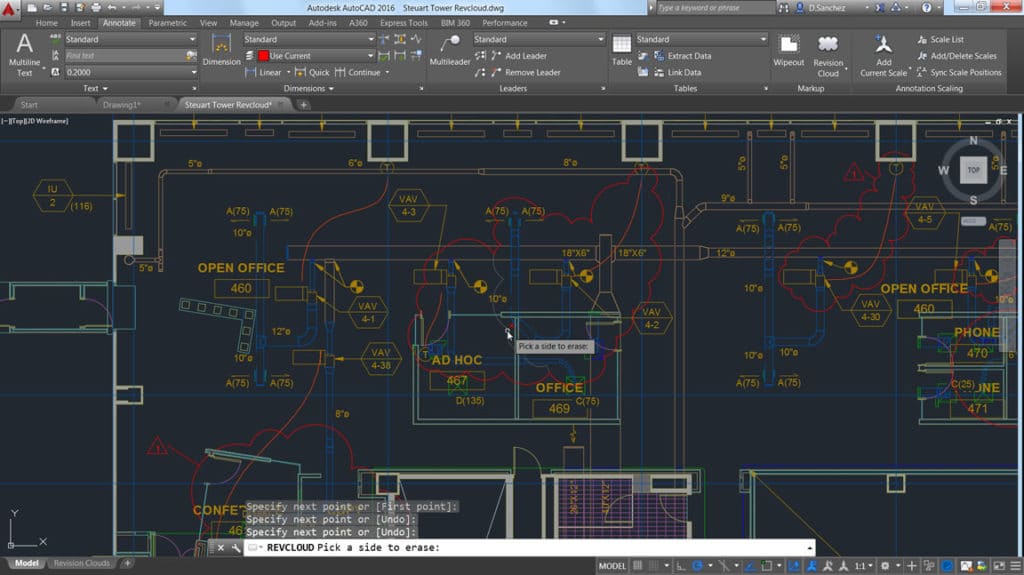
Screenshot of revision clouds in AutoCAD
Revit
Revit is a building information modeling (BIM) software for architects, structural engineers and designers. Autodesk purchased it in 2002 and, with it, became a key player in the BIM market. The software enables users to build structures and components in 3D, annotate with 2D drafting elements and access building information from the building model’s data. It has 4D BIM capabilities, which gives users the ability to plan and track the various stages of a building’s lifecycle—from concept, to construction, and finally demolition.
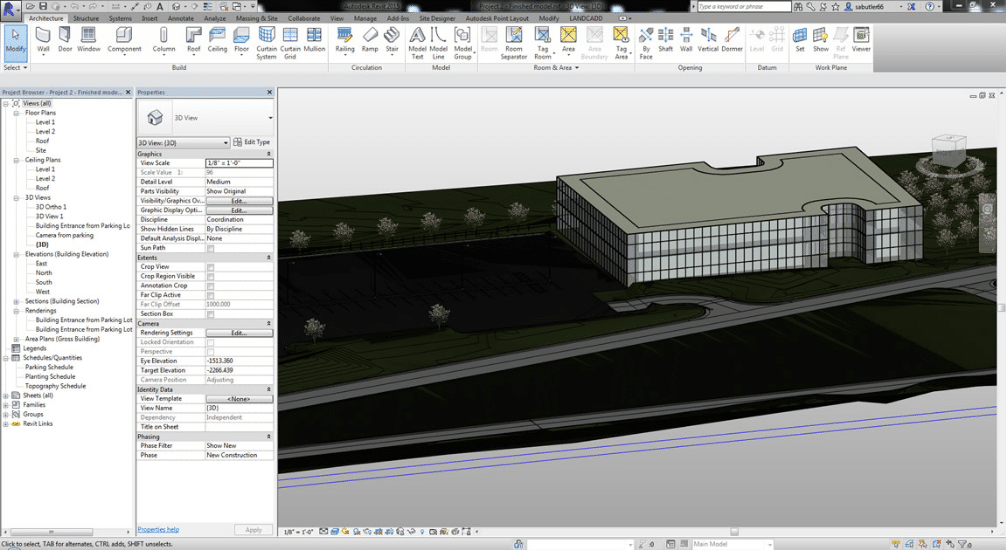
Screenshot of Revit’s site planning tools
Inventor
Autodesk Inventor is a specialized, mechanical design and 3D CAD software. It offers users professional-grade 3D mechanical design, documentation and product simulation tools. It includes freeform, direct and parametric modeling options, alongside advanced simulation and visualization tools. Many in the engineering industry opt for this product over AutoCAD for its specialized features.
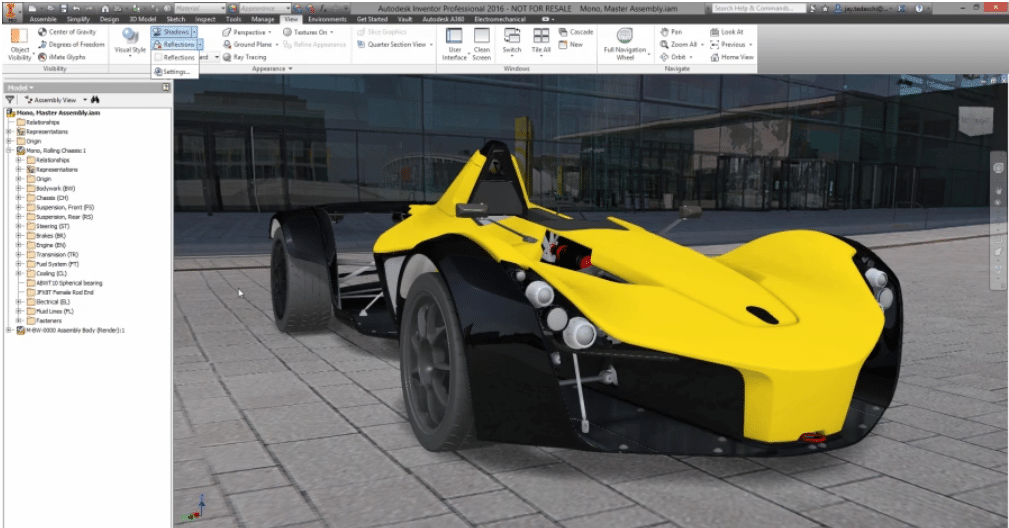
Rendering of a car in Autodesk Inventor
Maya
Autodesk might have made a name for itself in the CAD sector, but it has also been a key player in helping Hollywood bring its blockbusters to the big screen. Maya is a 3D animation, modeling and simulation software.
Maya is at the forefront of the media and entertainment industry—it’s helped shape many Oscar-winning and Oscar-nominated films in the Achievement in Visual Effects category. It’s been used in films like Avatar, and TV shows like Game of Thrones and The Walking Dead. In fact, in every year since 1997, the film winning the Oscar for best visual effects has used Maya. Check out the video below to see how Maya was used in James Cameron’s Avatar.
Fusion 360
Fusion 360 is a product aimed at meeting the cloud-based CAD trend that has cropped up in the CAD sector in the past five years or so. It’s a 3D CAD, CAM and CAE tool that allows users to complete an entire development process in a single cloud-based platform that works on both Mac and PC. While it currently requires a small download, Autodesk is working on a complete web-browser version.
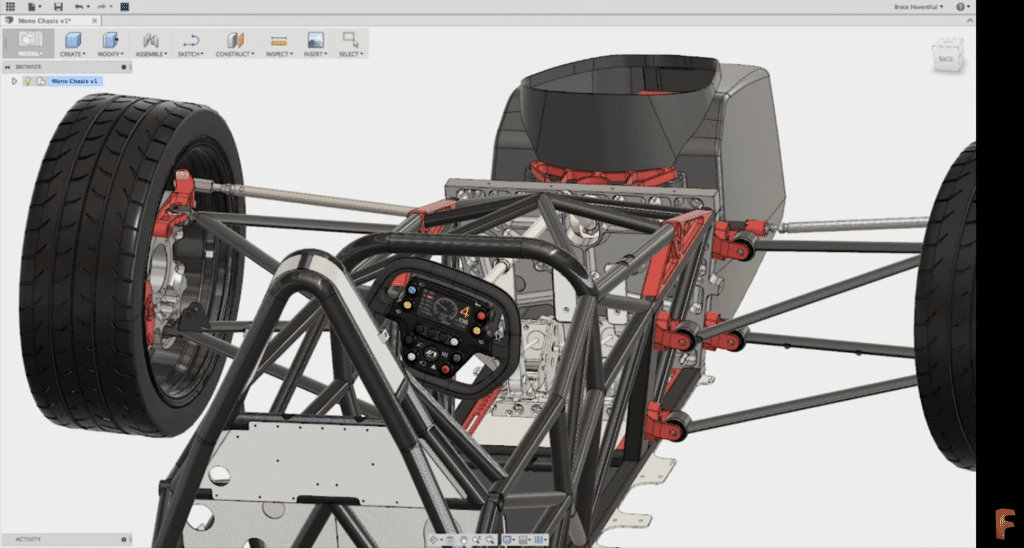
Example of freeform modeling in Fusion 360
Industry Collections
Of course in many cases, businesses or individuals require more than one Autodesk product—which can be costly. So, Autodesk came up with a solution: Industry Collections. These collections allow users access to a wider range of products for a more cost-effective price. In fact, last year Autodesk ended its perpetual licenses—making its products available only through subscriptions. These subscriptions are available with more flexible length terms (monthly, quarterly, annual, multi-year) and with options for single user or multi-user licences.
There are currently 3 industry collections on offer:
- Architecture, Engineering & Construction Collection: which includes Revit, AutoCAD Civil 3D, InfraWorks 360 and AutoCAD.
- Product Design Collection: which includes Inventor Professional and AutoCAD.
- Media & Entertainment Collection: this includes Maya and 3ds Max.
A Maker-Led Future & Corporate Acquisitions
The history of Autodesk can so far be laid out into three eras, as noted by Carl Bass. The first era of Autodesk began with one single product, AutoCAD, targeted at a single target audience—the AEC sector. The second era brought about the diversification of AutoCAD into a number of industries including entertainment, mechanical engineering and product design. The third era involves Autodesk’s current interest (under the leadership of Bass) towards broadening itself out to consumers. Carl Bass is interested in working towards a maker-led future. This is made clear with Autodesk’s products and acquisitions over the past ten years.
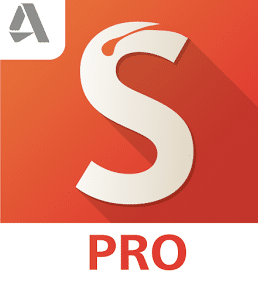
In 2009, Autodesk created Autodesk 123D, a suite of 3D modeling tools such as Catch, Sculpt+ and Make, with capabilities like 3D printing and assembly support. However, with the sheer amount of programs in this suite, there was a lot of overlap, leading to Autodesk making the decision to shut down these programs in March. They are set to be consolidated into key applications like Tinkercad and Fusion 360. Tinkercad, mentioned in our CAD freeware article, is a 3D design and 3D printing application, acquired by Autodesk in 2013. It can be used to create anything from toys, to prototypes and even jewelry. With its CSG (Constructive Solid Geometry) feature, it’s possible to get a 3D model in 10 minutes. With these capabilities, Autodesk is able to cater to broader consumers, as opposed to merely professionals.
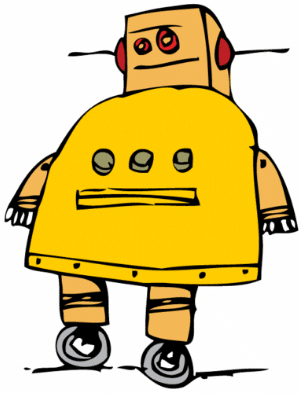
In 2011, Autodesk acquired Instructables, a website specializing in user-created DIY projects, for $30 million. They also acquired Pixlr, an online photo editing and sharing service, in the same year. With the acquisition of both Instructables and Pixlr, Autodesk received around 35 million monthly unique web visitors—ahead of Pinterest (23 million) and Tumblr (27 million). Needless to say, these maker communities are where the real value lies for Autodesk—paving the path towards a maker-led future.
Find out more about Autodesk’s acquisitions via Crunchbase.
Impact
On the CAD Industry
Autodesk’s creation of AutoCAD is easily one of the biggest milestones in the history of CAD. Not only did it pave the way for other CAD software, it also paved the way for the future. In fact, most things in the modern-built environment were touched in some way by Autodesk—from design, to manufacturing, to simulation or even construction.
Autodesk hasn’t stopped there. It dedicates millions a year to research projects across the globe. These projects cover a range of fields, from architectural design to CAD for life sciences, and even machine learning. Let’s take a look at some of Autodesk’s current projects:
Design Research is currently focused on discovering new, innovative user experiences for designers. It’s currently working on Project Dreamcatcher—a generative design system that can generate thousands of design options that meet specified goals.
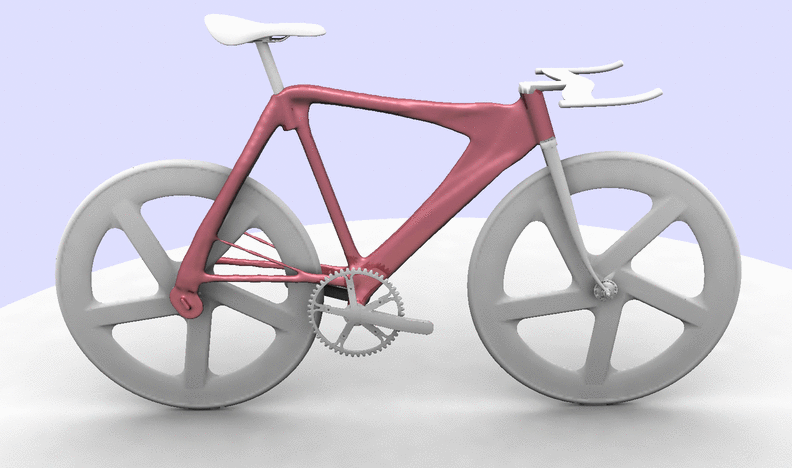
Image source: Autodesk. A bicycle generated by the Dreamcatcher system
Autodesk’s Bio/Nano research group has a current project focused on bioprinting—working with EpiBone to develop a particular resin that is printable on an SLA printer as well as being a bioinert material that stem cells can adhere to. They have in fact printed a porous scaffold with PEGDA resin that actually mimics the structural conditions within bone.
The User Interface Research group is focused on advancing the field of human-computer interaction research. Currently, they’re working on multi-touch platforms which have recently emerged into the consumer markets. This involves exploring displays in which multi-touch can exist, including interactive table top surfaces, digitized tablets and small mobile devices.
On Education
Autodesk doesn’t just provide products for the CAD industry, it also provides education for professionals and hobbyists alike. As Autodesk states, it has been “preparing students for the jobs of tomorrow with free design software today”. Indeed, more than 180 countries worldwide can take advantage of free Autodesk software for students, educators and educational institutions.
In this field, Autodesk goes even further with its own ‘university’—Autodesk University. AU first began as an event in 1993, as an Autodesk software user conference in San Francisco. It was a chance for professionals and hobbyists to share tips and compare notes. As you can imagine, the event was a big hit, resulting in it becoming an annual event. By 2008, Autodesk added international events in both Shanghai and Tokyo. And now, it’s a worldwide event with over 23,000 attendees. Following on from this success, the company decided to add Autodesk University online, giving people around the world the ability to access classes online for free.
This has given thousands of people the opportunity to educate themselves on all of Autodesk’s products—becoming the best kind of drafter, engineer or designer they can. And by giving away its products for free, Autodesk is creating potential future customers. To learn more about AU, check out the video below.
On CAD Careers
If Autodesk has had a huge impact on education, you can definitely bet that it has had an even bigger impact on careers. AutoCAD is prevalent across the CAD industry, but not just as a piece of software. AutoCAD skills have become not just important, but, in many cases, necessary across the CAD job sector. Whether it’s CAD drafting or CAD engineering, many employers look for individuals with skills in AutoCAD or Revit. In fact, some jobs will contain AutoCAD in their title, e.g. AutoCAD drafter or designer.
Needless to say, there are hundreds of jobs out there due to the importance of Autodesk technology nowadays. If you’re interested in more information, check out AutoCAD Careers — Everything You Need To Know.
On Sustainability
Autodesk hasn’t just committed itself to creating new products, or funding research—it’s also committed itself to helping designers and engineers create a ‘sustainable‘ future.
Autodesk Foundation is dedicated to supporting the design and creation of solutions to the world’s most pressing social and environmental challenges. This foundation has impacted 55 countries this year alone—with 2,151 software licenses and 22,580 employee volunteer hours. This foundation contains the MASS Design Group, which creates sustainable buildings that improve health and strengthen communities. It also contains Water For People, which strives to bring clean drinking water and quality sanitation to everyone.
Autodesk has also collaborated in many projects in its commitment to sustainability. For example, in 2011, Autodesk worked with Airbus to build a lighter, more environmentally-friendly aircraft. By use of 3D printing and generative design technology, Airbus produced an aircraft cabin component—a bionic partition. If applied to the entire cabin and the backlog of A320 planes, this could save 465,000 tonnes of CO2 emissions a year. That’s the equivalent of taking 96,000 passenger cars off the road for one year!
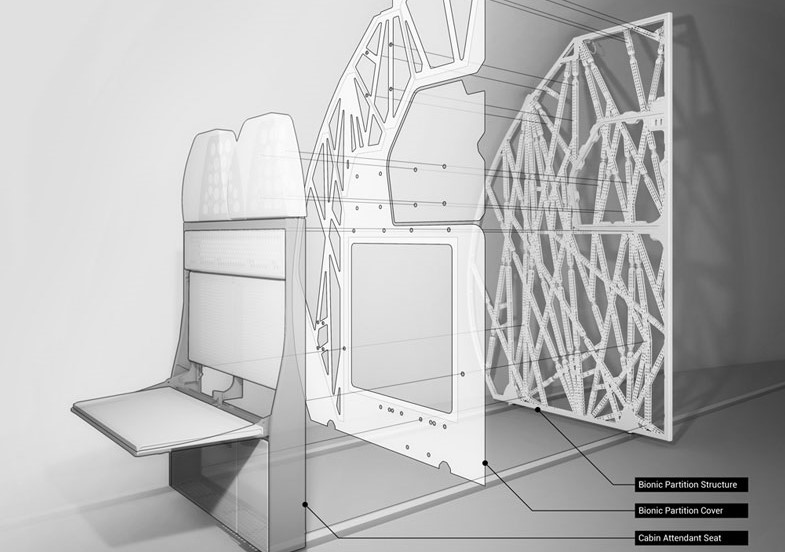
Image source: Autodesk
They also have a number of impact programs dedicated to sustainability solutions. This includes a commitment to helping entrepreneurs make a positive impact on the environment with their technology—like Bombora Wave Power who have developed a wave power system that harvests energy from the ocean, and provides homes for marine life. Autodesk are also dedicated to educating students, educators and professionals in sustainability—with the Autodesk Sustainability Workshop which gives people the opportunity to earn certificates and badges with free online courses. In addition, the Autodesk Technology Impact Program donates software to nonprofits that are using design for environmental or social good. And let’s not forget Autodesk’s dedication to making the future of 3D printing and digital fabrication greener, like SunZilla—an open source, DIY portable solar generator that is designed to replace conventional diesel generators.
It seems there’s no end to the impact that Autodesk has had, and will continue to have on the world.
The Future: What’s Next?
So what’s next for Autodesk? It’s difficult to say really, considering how widespread Autodesk’s interests are. However, there are a few predominant CAD trends that Autodesk seems to be veering towards so far.
As with most CAD businesses, Autodesk is heavily invested in cloud-based CAD. It’s currently introducing Fusion 360 into a web browser with Project Leopard. With this, users would no longer have to worry about installations or updates—they would simply log in, open their designs in-browser and edit as they wish. Autodesk is also invested in the growing interest in Augmented Reality (AR) and Virtual Reality (VR) based modeling. This trend has a lot of potential—from using VR headsets to hold assemblies and pick apart components, to walking through a house tour before the house is even finished. Of course, it will be many years before AR/VR-based modeling is fully realized. Until then, you can stay updated on Autodesk’s progress with Through the Interface.
And of course, as noted, Autodesk is increasingly more focused on developing software for the present and future needs of makers. In fact, they’ve named this vision ‘The Future of Making Things‘. From this vision sprang the Pier 9 workshop as a place to explore every stage of making things—from idea to digital model, to real-world product. This venture is also interested in advancing 3D design and fabrication technology which can be seen in Project Escher. 3D printing is a complex and timely process, as we have discussed with multicolor printing. It can take a long time to complete a project, particularly with a single nozzle—Project Escher is an answer to this problem. It’s a computer system that programs multiple heads to print the same object. This system has been used by Titan Robotics in their 5-print-head 3D printer, The Cronus, which will be available to buy from February 2017.
Of course that’s just a slight glimpse into what the future potentially holds for Autodesk—there will undoubtedly be a few surprises along the way. We look forward to seeing what other innovations Autodesk will have to offer the maker community in the near future.

